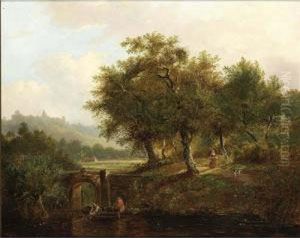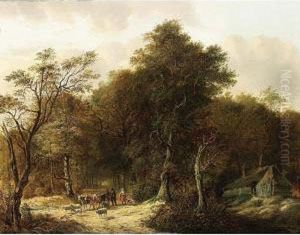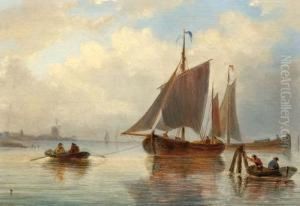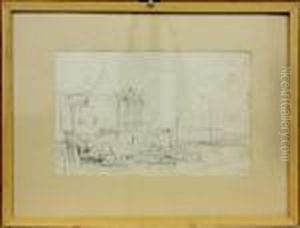Johan Diderik Corn. Veltens Paintings
Johan Diderik Cornelis Veltens, born in 1826 and passing away in 1915, was a Dutch painter known for his contributions to the Romantic movement in the Netherlands. His life spanned much of the 19th century, a period rich in artistic evolution and revolution in Europe. Veltens was part of a generation of artists who sought to express emotion, beauty, and national identity through their work, amidst the backdrop of industrialization and social change.
Veltens received his artistic training at the Royal Academy of Art in The Hague, which was a central institution in nurturing Dutch talent and promoting the fine arts in the Netherlands. His education there would have provided him with a solid foundation in the techniques and theories of art prevalent at the time, including the importance of drawing from life and the study of the works of old masters.
Throughout his career, Veltens was known for his landscapes and genre scenes, often imbued with a sense of tranquility and a deep appreciation for the natural beauty of the Dutch countryside. His works reflect the Romantic movement's emphasis on emotion and nature, with a particular focus on capturing the changing effects of light and atmosphere. Despite the relatively local focus of his subjects, his work resonated with broader Romantic themes prevalent across Europe, including an interest in the sublime and the picturesque.
Veltens' contributions to Dutch art were recognized in his time, and he participated in several important exhibitions, contributing to the vibrant artistic culture in the Netherlands during the 19th century. However, like many of his contemporaries, his name has not remained as prominent in the annals of art history as some of his peers. Today, his work is appreciated by connoisseurs of Dutch art and the Romantic movement, and his paintings can be found in national collections and museums in the Netherlands.
Despite the lack of widespread recognition in modern times, Johan Diderik Cornelis Veltens remains an important figure in the history of Dutch art. His dedication to capturing the beauty of his homeland and the emotional depth of his subjects speaks to a universal human experience, transcending the specific context of 19th-century Netherlands. His legacy lives on through his contributions to the Romantic movement and the enduring appeal of his artwork.



